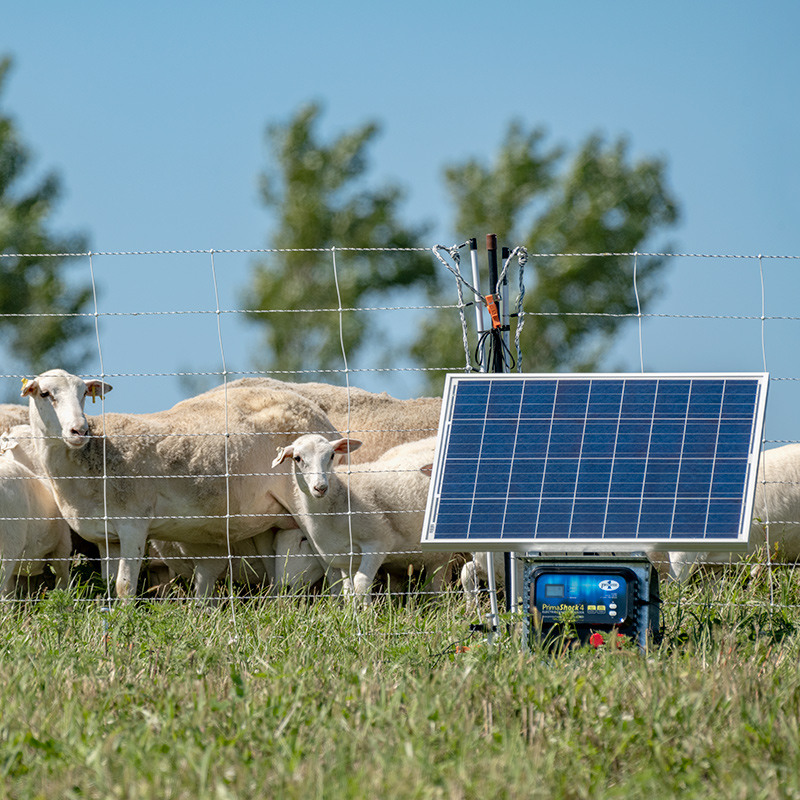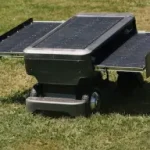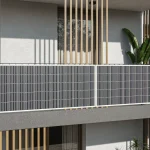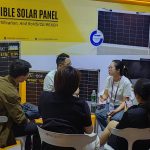In the evolving landscape of sustainable farming and livestock management, solar electric fences have emerged as a vital tool for rural areas. These fences offer a reliable, eco-friendly alternative to traditional electric fencing, especially in remote locations where access to the grid can be challenging. By harnessing the power of the sun, solar electric fences provide consistent, low-maintenance energy to keep livestock secure while reducing operational costs and environmental impact.
How Solar Electric Fences Work
Solar electric fences operate on a straightforward principle: converting sunlight into electricity to power the fence. The system typically includes solar panels, a battery, a charge controller, and a fence energizer.
Solar Panels: These panels capture sunlight and convert it into direct current (DC) electricity. The efficiency of the system largely depends on the quality and positioning of these panels, as they need to receive adequate sunlight to function optimally.
Battery: The electricity generated by the solar panels is stored in a battery, ensuring that the fence remains powered even during nighttime or cloudy days. A well-sized battery is crucial for maintaining continuous operation.
Charge Controller: This device regulates the flow of electricity from the solar panels to the battery, preventing overcharging and ensuring that the system operates safely and efficiently.
Fence Energizer: The energizer converts the DC power stored in the battery into high-voltage pulses that are sent through the fence wires. These pulses are what deter animals from crossing the boundary.
Benefits of Solar Electric Fencing
1. Energy Independence
One of the most significant advantages of solar electric fencing is energy independence. Farmers and ranchers in rural or off-grid areas can set up these fences without relying on external power sources. This independence is particularly beneficial in remote regions where electricity supply is unreliable or non-existent.
2. Cost-Effectiveness
Although the initial setup cost for solar electric fences can be higher than traditional systems, they offer long-term savings. Once installed, the system’s operation is virtually free, as it relies solely on sunlight. Over time, this can lead to significant reductions in energy costs, especially for large properties.
3. Environmental Impact
Solar electric fences are an environmentally friendly option, as they reduce reliance on fossil fuels and decrease greenhouse gas emissions. By utilizing renewable energy, these systems contribute to sustainable farming practices, aligning with broader efforts to combat climate change.
4. Low Maintenance
Another key benefit of solar electric fences is their low maintenance requirements. With fewer moving parts and no need for a constant power source, these systems are less prone to breakdowns. Routine checks of the solar panels and battery are generally all that’s required to keep the system running smoothly.
5. Reliability in Remote Areas
For farmers managing livestock in remote areas, solar electric fences are a reliable solution. They provide consistent power even in locations far from the grid, ensuring that livestock remains secure regardless of the circumstances.
Installation and Considerations
When setting up a solar electric fence, proper planning is crucial. The system must be designed to meet the specific needs of the property and livestock. Key considerations include the size and type of the fence, the number of animals, and the local climate.
Sizing the System: It’s important to choose a solar panel and battery size that can handle the energy needs of the fence. Factors such as the length of the fence, the type of energizer used, and the local weather conditions all play a role in determining the appropriate system size.
Positioning: Solar panels should be positioned to receive maximum sunlight throughout the day. In the Northern Hemisphere, this typically means facing the panels south at an optimal angle to capture the sun’s rays.
Maintenance: While solar electric fences are low maintenance, regular inspections are necessary to ensure the system remains effective. This includes cleaning the solar panels, checking battery health, and ensuring the fence wires are free from vegetation that could cause shorts.
Conclusion
Solar electric fences offer a sustainable, cost-effective, and reliable solution for managing livestock in rural areas. By harnessing the power of the sun, these systems provide farmers with energy independence, reduce operational costs, and contribute to environmental conservation. As technology advances, solar electric fencing will likely become an even more integral part of sustainable farming practices.
For those interested in exploring this option, it’s important to consider the specific needs of your operation and consult with experts to design a system that meets your requirements. With the right setup, a solar electric fence can be a long-lasting and valuable investment for any rural property.








